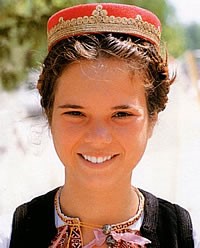Croat in Austria

Photo Source:
Lea Maric
|
Send Joshua Project a map of this people group.
|
| People Name: | Croat |
| Country: | Austria |
| 10/40 Window: | No |
| Population: | 90,000 |
| World Population: | 5,072,100 |
| Primary Language: | Croatian |
| Primary Religion: | Christianity |
| Christian Adherents: | 91.00 % |
| Evangelicals: | 0.50 % |
| Scripture: | Complete Bible |
| Ministry Resources: | Yes |
| Jesus Film: | Yes |
| Audio Recordings: | Yes |
| People Cluster: | Slav, Southern |
| Affinity Bloc: | Eurasian Peoples |
| Progress Level: |
|
Introduction / History
South Slavic people mostly live in Croatia, Bosnia and Herzegovina and nearby countries. There is a notable Croat diaspora in western Europe, the Americas, Australia, New Zealand and South Africa.
What Are Their Lives Like?
The area settled by Croats has a large diversity of historical and cultural influences, as well as diversity of terrain and geography. The coastland areas of Dalmatia and Istria were subject to Roman Empire, Venetian and Italian rule; central regions like Lika and western Herzegovina were a scene of battles against the Ottoman Empire, and have strong epic traditions. In the northern plains, Austro-Hungarian rule has left its marks.
Despite that, Croats have maintained a strong, distinctive culture and sense of national identity. The most distinctive features of Croatian folklore include klapa ensembles of Dalmatia, and tamburitza orchestras of Slavonia. Folk arts are performed at special events and festivals, perhaps the most distinctive being Alka of Sinj, a traditional knights' competition celebrating the victory against Ottoman Turks. The epic tradition is also preserved in epic songs sung with gusle. Various types of kolo circular dance are also encountered throughout Croatia.
What Are Their Beliefs?
The vast majority of Croats are Roman Catholic, and the church has had a significant role in fostering of the national identity. The confession played a significant role in the Croatian ethnogenesis.
What Are Their Needs?
The post-war government's policy of easing the immigration of ethnic Croats from abroad encouraged a number of Croatian descendants to return to Croatia. The influx was increased by the arrival of Croatian refugees from Bosnia and Herzegovina and from Vojvodina (BaAka and especially Srijem). After the war's end in 1995, most Croatian refugees returned to their previous homes, while some (mostly Croat refugees from Bosnia-Herzegovina and Janjevci from Kosovo) moved into the formerly-held Serb apartments.
Prayer Points
Pray that they can know the difference between Catholic doctrine and Biblical Christianity.
Pray that they can have good mental health from depression and pain from ethnic conflicts in the past.
Pray that they can trust others and read the Bible and be open to believers in Christ.
Pray that the cultural Christianity (especially superstition about catholic saints) can be corrected.